Exploring the GIA Gem Microscope: Insights and Innovations
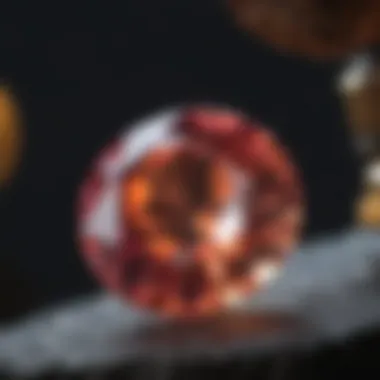
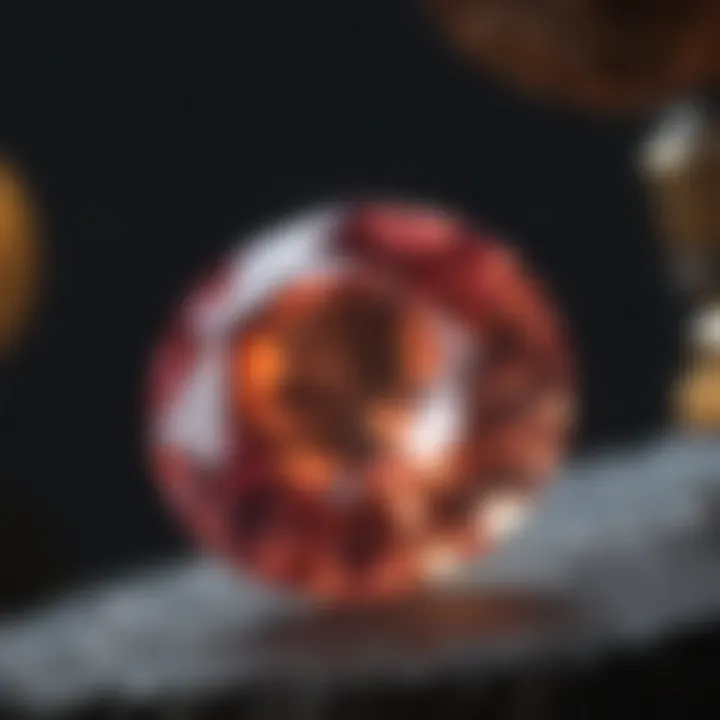
Intro
In the realm of gemology, where the meticulous study of gemstones holds sway, understanding the tools that enhance this craft is pivotal. The GIA gem microscope stands out as a significant device for gemologists and enthusiasts alike, allowing for profound examination of the subtleties and intricacies that define various gemstones. This exploration will take us through the fruitful functionalities, advanced designs, and the critical role this instrument plays in analyzing and certifying these natural jewels.
Gemstone Overview
Definition and Characteristics
Gemstones are more than mere adornments; they are beautiful, natural creations. Typically, a gemstone is defined as a piece of mineral crystal that, after being cut and polished, is used to make jewelry or other items of decoration. The allure of gemstones comes not solely from their beauty but also from their physical properties such as hardness, refractive index, and crystal structure. For instance, the deep blue hue of a sapphire, along with its robustness, makes it highly sought after.
Characteristics that distinguish gemstones can include color, clarity, cut, and carat weight. Each of these factors contributes to the overall value and desirability of a gemstone in the eyes of collectors and jewelers.
Classification of Gemstones
Gemstones can be broadly classified into two categories: precious and semi-precious.
- Precious Gemstones: These are rarer and often considered to have higher value. Classic examples include diamonds, emeralds, rubies, and sapphires. Their rarity, coupled with a combination of color, clarity, and brilliance, places them in a category apart.
- Semi-Precious Gemstones: This classification includes a wider variety of stones such as amethyst, garnet, and topaz. While these stones are stunning, they are more abundant than precious stones and hence, often come with a lower price tag.
Each gemstone classification not only reflects the physical properties of the stones but also layers them with cultural and historical narratives, enriching their value beyond the mere aesthetic.
Historical Significance
Ancient Uses and Cultural Importance
Throughout history, gemstones have played significant roles in various cultures. The Ancient Egyptians are known to have adorned themselves with lapis lazuli, believing it to provide protection and power. In other cultures, gems became integral to rituals, symbolizing wealth or status. In modern times, gemstones often celebrate milestones and significant events, bridging the old with the new.
Myths and Legends Surrounding Gemstones
The aura of gemstones is further intensified by folklore and mythology. The belief that a diamond can bring invincibility, or that sapphires can bring wisdom, often draws from centuries-old tales. These legends not only influence how gemstones are viewed but also affect their desirability in markets across the globe.
"Gemstones are not just objects of beauty; they carry tales woven into their very essence, enchanting and captivating those who dare to explore their depths."
As we explore the GIA gem microscope, understanding gemstones' characteristics and historical significance enhances our appreciation for this powerful tool in gemology.
Prolusion to Gem Microscopy
Gem microscopy plays a crucial role in gemology, offering tools and techniques that allow for a detailed examination of gemstones. Delving into the minute characteristics of gems, gem microscopes provide insights that are fundamental for appraisal, grading, and identification. This intricate study is not just about clarity and color; it encompasses inclusions, treatments, and the overall craftsmanship of a gemstone.
Historically, gemologists relied on their naked eye, but this approach was often limiting. The introduction of microscopy changed the game. By magnifying the smallest details, experts can differentiate between natural stones and their synthetic or enhanced counterparts.
The advancement in gem microscopy aligns with growing consumer demand for authenticity and quality. As more people invest in gemstones, the integrity of the gem trade relies heavily on accurate assessments made possible by sophisticated microscopy techniques. Here are some specific benefits of adopting microscopy in gemology:
- Enhanced Detail: View inclusions and imperfections that would otherwise be invisible.
- Professional Grading: Establishes clear criteria for quality assessments, leading to informed buying decisions.
- Treatment Detection: Helps in identifying treatments that may affect a gem’s value.
Engaging with macroscale analysis provides significant benefit in understanding the big picture of gemstone evaluation, while microscale examination focuses on the finer points that are just as crucial.
As we explore the history and significance of gem microscopy further, we'll uncover how these tools have evolved to meet the industry's needs, fostering a transparent market built on trust and knowledge.
The Genesis of Gem Microscopy
The concept of using a microscope to analyze gemstones isn’t as recent as one might think. In the early 19th century, scientists began experimenting with optical devices for various purposes. Gemologists quickly recognized their potential to reveal the complex internal structure of gemstones. The advent of the light microscope marked a pivotal point in gemological studies, allowing experts to magnify gems up to 1,000 times their size. Initially, these devices were rudimentary but set the stage for more advanced technologies. Over the decades, improvements in optics and lighting technology enhanced the effectiveness of gem microscopes. Compounds used in lenses have evolved from glass to advanced materials, enabling clearer imaging without distortion.
As the discipline of gemology matured, so did the equipment. The Gemological Institute of America (GIA) played a significant role in formalizing the education of gemologists and promoting the use of microscopes. With the development of specialized gem microscopes, GIA helped shape standards that are still prevalent today. Microscopy soon became an essential part of gemological education, establishing a clear method for training budding gemologists.
Importance in Gemology
In the modern gemological landscape, the microscope stands as a cornerstone of gemstone evaluation. Its influence extends into many aspects of the gem industry. Here are some crucial points highlighting its importance:
- Educational Tool: Serves as a fundamental resource for gemology students, providing hands-on learning opportunities.
- Industry Standards: Establishes best practices for grading and valuing gems, ensuring consistency across the marketplace.
- Consumer Confidence: Builds trust through rigorous testing, which is vital especially as the market is flooded with imitations.
Moreover, with advancements in technology, the GIA has embraced digital integration, allowing for an unprecedented level of detail and accessibility. High-quality imaging techniques not only document findings but are also shared for educational and promotional purposes. This collaboration between the traditional aspects of gemology and modern technology ensures that future generations of gemologists are well-equipped to tackle challenges in their field.
Understanding the GIA Gem Microscope
The GIA gem microscope stands as a cornerstone in the realm of gemology, providing a gateway into the minute details that lie within gemstones. Understanding this powerful tool goes beyond mere functionality; it encompasses an appreciation for how significant it is in authenticating, grading, and identifying gems. As jewelers and enthusiasts delve into the intricacies of gemstones, the GIA gem microscope becomes an essential companion, one that holds the key to differentiated analysis.
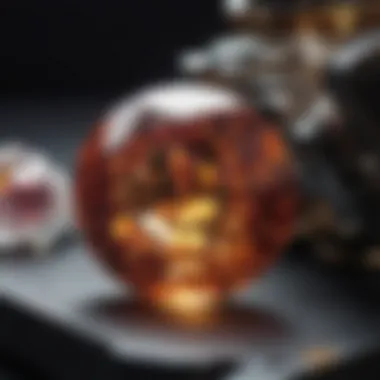
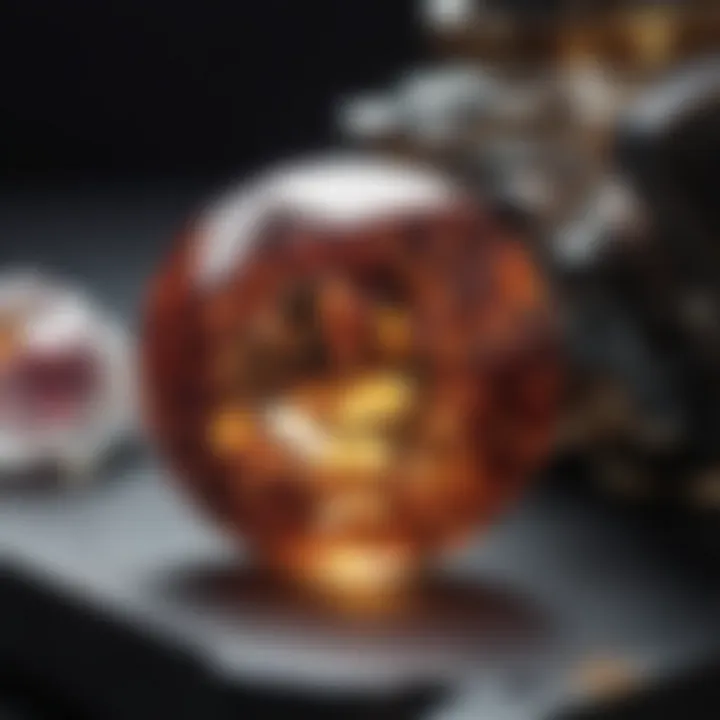
A common saying in gemology is, "Seeing is believing." This deeply resonates with the functionality of the GIA gem microscope. It enables users to see the hidden features of gems that the naked eye would easily overlook. The importance doesn't stop at visual clarification; this advanced apparatus also enhances the accuracy of assessments, ensuring that gemologists make calculated decisions.
Technical Specifications
When discussing technical specifications, the GIA gem microscope sparks considerable interest among professionals. Its design emphasizes precision, allowing for magnification levels that can reach up to 40x or more, suitable for even the most complex gemstones. The adjustable optics not only provide flexibility but also accommodate various user preferences.
- Magnification Ratio: Varies significantly; commonly adjustable from 10x to 40x.
- Light Source: Equipped with LED illumination, providing a clear view without overheating the gemstone.
- Eyepiece: Comfortable enough for prolonged use, with built-in diopter adjustments to cater to individual sight differences.
"A good microscope is to gemology what a telescope is to astronomy. It opens up a whole new universe of detail."
Ensuring these technical aspects work in harmony is vital. The precision these instruments afford can often mean the difference between identifying a natural stone and a well-crafted imitation.
Components Overview
Every component of the GIA gem microscope plays a role in its overall functionality. Understanding these components not only aids in effective usage but also helps in proper maintenance. Here’s a brief breakdown:
- Base and Stand: Provides stability; can be adjusted for height.
- Objective Lenses: These come in various magnifications, allowing the user to choose the appropriate level based on the type of gemstone being analyzed.
- Stage: Typically consists of a movable platform that holds the gemstone, which enhances access from multiple angles.
- Illumination System: A critical feature that ensures optimal visibility, utilizing LED lighting to accentuate the gem's characteristics.
Each of these components brings together a complete toolkit that aids gemologists in conducting meticulous examinations. Even the design and ergonomics lend themselves to a user-friendly experience, particularly when analyzing top gemstones over extended periods.
In sum, understanding the GIA gem microscope provides both a scientific and artistic prism through which gemstones can be comprehensively analyzed and appreciated.
Functional Aspects of the GIA Gem Microscope
The GIA gem microscope serves a pivotal role in gemology, ensuring that each gemstone is analyzed with precision. Understanding its functional aspects means grasping how the microscope facilitates detailed examination, which is crucial for gemologists, jewelers, and enthusiasts alike. As gems come with different characteristics and qualities, it becomes essential to have a reliable tool that can adapt to various scenarios. A thorough comprehension of magnification, resolution, and lighting techniques unfolds a new dimension of depth in gemstone analysis.
Magnification and Resolution
Magnification and resolution are integral to the effectiveness of the GIA gem microscope. The ability to enlarge intricate details allows gemologists to inspect inclusions, surface textures, and other characteristics that are instrumental for classification. High-quality optics magnify objects while maintaining clarity, ensuring that critical details are not lost in the process.
In practice, the GIA microscope can magnify up to 50x or more, allowing experts to observe gemstones in a way that the naked eye cannot. Not only does magnification facilitate a clearer view of the gem, but it also enhances the identification of natural and synthetic stones. For example, when observing a diamond, the clarity of its cut and the presence of any inclusions become evident at higher magnifications.
To put it simply, high resolution paired with magnification creates a visual harmony that enhances analysis accuracy. Think of it as peering through a window; it is not just about seeing the landscape but also discerning the details of the trees and rocks that outline it.
Lighting Techniques
Illumination is the unsung hero of microscopy, often underestimated yet fundamentally crucial. The GIA microscope employs various lighting techniques to reveal hidden characteristics of gemstones. The right lighting can dramatically change how a gem appears under examination, emphasizing facets and colors that might otherwise go unnoticed.
- Transmitted Light: This method shines light through a gem, revealing internal features such as inclusions or color zoning. It is particularly effective for stones that are relatively transparent.
- Reflected Light: Beneficial for examining the surface of opaque stones, it has a different approach. Reflected light sources highlight facets, enabling an inspection of the polish and lustre of a gemstone.
- Cross-Polarized Light: This technique employs polarizing filters to minimize glare and reveal pleochroism, which is a phenomenon where a gemstone shows different colors when viewed from different angles.
The careful application of these lighting techniques allows for a comprehensive examination that unveils details crucial for grading or identifying treatment methods. It’s like adjusting the brightness on a photo—how you light up a gem can bring entirely new features to light.
Applications of the GIA Gem Microscope
The GIA gem microscope holds a position of significant importance in the realm of gemology. It's more than just a tool for peak curiosity; it serves critical functions that elevate the standard of gem grading and certification. This instrument empowers gemologists to assess the quality, uniqueness, and potential treatments of gemstones with precision.
One of the primary applications lies within gem grading and certification. When evaluating a gemstone, a gemologist must consider several key factors such as clarity, color, cut, and carat weight.
Gem Grading and Certification
The process of grading a gemstone is akin to peeling an onion. Each layer revealed by the microscope can influence the final judgment made on the gem's worth. Gemologists employ various magnification settings to meticulously examine the internal and external characteristics of each stone. Through such examination, imperfections like inclusions can be identified. For instance, by utilizing high magnification (sometimes reaching 40x), one can see tiny fissures or minerals trapped inside the gem. This detailed scrutiny ensures that the gemstone is accurately graded and certified.
A qualified gemologist's assessment, equipped with the GIA gem microscope, lends vital credibility to a gemstone's value. This developed trust impacts its price in the market, making it essential for auctions, sales, and personal collections alike. When both buyers and sellers know they can rely on proper certification, the entire gemstone trade operates more smoothly.
Identification of Treatments
Another vital application the GIA gem microscope serves is in the identification of treatments applied to gemstones. Many gems are enhanced to improve clarity or color. For example, the process of heat treatment in sapphires or the use of oils in emeralds can alter a gemstone’s appearance. A skilled gemologist can distinguish these treatments through careful observation under magnification.
Common Treatments Include:
- Heat Treatment: Increasing a gem's color and clarity through controlled exposure to heat.
- Oil Treatment: Often applied to emeralds to reduce visible inclusions. This treatment can be difficult to identify without the microscope.
- Fracture Filling: A process used on diamonds and other stones to make inclusions less visible. The GIA microscope reveals foreign substances used in filling the fractures.
Ultimately, understanding a gemstone's treatment history adds an essential layer of transparency, whether for consumers or collectors. The GIA gem microscope can help clarify if a gem is natural, treated, or synthetic, ensuring buyers make informed decisions based on the accurate nature of their purchase.
"The GIA gem microscope transforms the art of grading into a science, allowing gemologists to discern the nuances that make each stone unique.”
In summary, the applications of the GIA gem microscope are crucial in the world of gemology. Whether for grading, certification or identifying treatments, this sophisticated tool enhances the integrity of the jewelry market, ensuring clarity and confidence for all stakeholders involved.
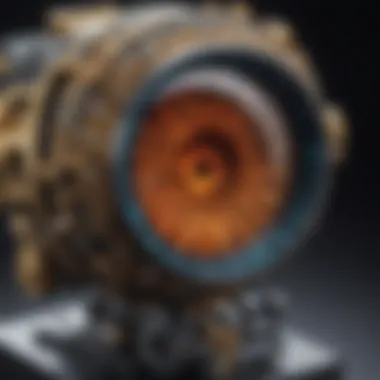
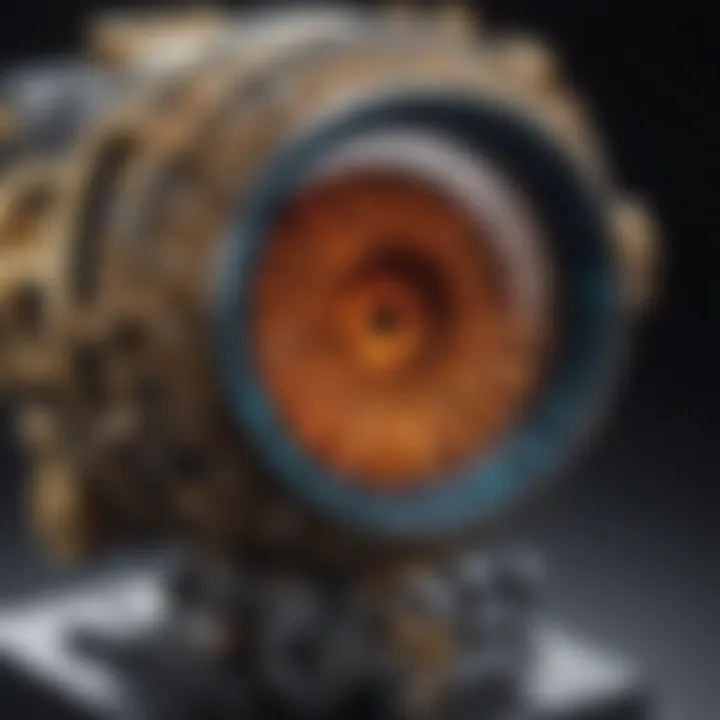
Comparative Analysis with Other Microscopes
When discussing the GIA gem microscope, it’s essential to consider how it stands up against its competitors. This comparative analysis sheds light on specific elements that elevate the GIA model above others, from technical features to overall usability. With the growing market of gemological tools, understanding where the GIA microscope fits helps jewelers, gemologists, and enthusiasts make informed choices.
GIA vs. Other Brands
The GIA microscope makes its mark in the gemological community not just due to its reliable performance but also because of its unique offerings. For instance, when comparing the GIA microscope with the Leica and Nikon models, one notes key differences in functionality and design.
- Optics Quality: While Leica microscopes are renowned for exceptional optics, the GIA microscope balances clarity with affordability. Users often favor GIA’s lens for their sharpness, particularly under high magnification.
- Ease of Use: Where Nikon excels in providing extensive digital features, the GIA microscope remains straightforward, which many professionals prefer. In gem-related settings where time is of the essence, simplicity can be a virtue.
- Accessories: GIA microscopes offer a wide array of accessories enhancing the microscopy experience, where other brands may not provide as many adaptable tools.
In summary, comparing the GIA microscope with others emphasizes its solid presence in the market without overcomplicating the user experience.
Cost vs. Performance
Cost consideration in high-end tools like the GIA gem microscope houses a delicate balance between investment and its performance. Is it worth the price tag? To elucidate this:
- Value for Money: The GIA’s pricing often reflects the quality of the craftsmanship and advancements in technology. A cheaper alternative may save dollars upfront but could lack necessary features that lead to rounded analyses.
- Longevity: The durability and maintenance costs of the GIA microscope can often justify its higher initial cost. Many gemologists report that cheaper options tend to need replacement or repairs more often.
- Performance Metrics: In comparative testing, GIA microscopes will generally outperform lower-cost brands in resolution and precision. This performance is vital for tasks such as gem grading and identifying treatments.
Thus, when evaluating cost versus performance, it’s evident that while there are other options available, investing in a GIA microscope offers substantial returns through accuracy and reliability, which is invaluable in the fast-paced world of gemology.
Maintaining Your GIA Gem Microscope
In the realm of gemology, the GIA Gem Microscope stands as a cornerstone for gem analysis. Like any high-precision instrument, its effectiveness hinges not just on its design or features but also on how well it is maintained. Proper upkeep ensures not only the longevity of the microscope but also the accuracy of the results it yields. This section sheds light on maintenance practices that every gemologist should adopt to preserve the reliability of their equipment.
Regular Cleaning Practices
Keeping the GIA Gem Microscope clean might seem like a minor task, yet it can greatly affect your observations. Dust, fingerprints, and other contaminants can play havoc with the clarity of the images you capture. Here are some practical tips on how to clean your microscope:
- Use a Soft Brush: A camel hair brush can delicately remove dust particles from lenses without causing scratches. Just a gentle sweep can make a world of difference.
- Microfiber Cloths: For oil smudges or stubborn marks on lenses, avoid paper towels. Instead, use a damp microfiber cloth, which is less abrasive and designed to lift oils while protecting lens coatings.
- Cleaning Solutions: If a deeper clean is necessary, opt for a lens solution specifically made for optical instruments. Never use household cleaners as they can damage coatings on the lenses.
- Routine Schedule: Make it a habit to clean the microscope after every major use. This simple practice will prevent build-up over time.
By adhering to these cleaning guidelines, you ensure your microscope remains in top shape, enhancing the viewing experience.
Calibration Techniques
Calibration is another significant aspect of maintaining your GIA Gem Microscope. Without proper calibration, even the finest microscope can deliver misleading results. Here’s how to ensure that your microscope is finely tuned:
- Initial Calibration: When you first set up your microscope, carefully follow the manufacturer's instructions for calibration. This includes aligning the optics and adjusting the lighting settings to suit your specific usage.
- Periodic Checks: Regular checks are essential. Verify settings diligently before important analyses. This may include focusing on a standard reference gemstone to ensure the microscope delivers accurate magnification and clarity.
- Adjusting for Environmental Factors: Temperature and humidity can affect the instrument’s performance. If you notice discrepancies in results, consider environmental adjustments to your workspace.
Maintaining calibration is key to achieving precision in your gemological studies. Misalignment can lead to erroneous conclusions, jeopardizing the value assessment of a gemstone.
- Professional Servicing: Investing in professional maintenance periodically can also be beneficial. A technician can calibrate your microscope, checking for any wear and tear that may have an impact on performance.
In summary, maintaining your GIA Gem Microscope is not merely about preserving an instrument. It bolsters the accuracy of your findings, enhancing your overall reliability as a gemologist. By implementing regular cleaning and calibration techniques, you not only prolong the life of your microscope but also solidify the foundation of your gemological practice.
Technological Innovations in Gem Microscopy
In gemology, technological innovations in microscopy play a crucial role in enhancing the study and assessment of gemstones. The growing complexity of gem materials and treatments necessitates more sophisticated tools that can reveal intricate details, which are often invisible to the naked eye. Within the realm of gem microscopy, advancements in digital technologies and new microscopy techniques are vital for anyone serious about gemstones—be it gemologists, collectors, or jewelry designers. By embracing these innovations, we can not only appreciate the beauty of these stones but also understand their quality and authenticity on a deeper level.
Integration of Digital Technologies
The integration of digital technologies into gem microscopy has brought forth a transformative approach to how gemologists inspect and analyze gemstones. Gone are the days when a simple magnification and light source were the only tools at one's disposal. Now, digital imaging, software analysis, and electronic documentation are revolutionizing gemstone examination.
One major benefit of digital integration is the ability to capture high-resolution images, which makes it easier to document findings and share them with clients or colleagues. Tools like digital cameras, sensors, and high-quality lenses enable the microscope to provide vibrant, detailed images that serve not only as records but also as learning resources. This can be immensely helpful, particularly when training new gemologists or enthusiasts.
Moreover, the adoption of imaging software allows for image processing and manipulation, which can highlight features that are not immediately apparent. For example, software can enhance contrast in a photograph, highlighting inclusions or surface features of a gemstone that signify its natural origin or any treatments it may have undergone.
Despite these benefits, there are considerations to keep in mind. Digital tools require ongoing calibration and maintenance to ensure accurate results. Users need to be trained not only in the operation of the physical aspects of the microscope but also in how to effectively utilize digital technologies. Understanding these tools is essential; otherwise, gemologists risk misrepresenting a stone's characteristics due to improper usage of the technology.
Future Trends in Microscopy
Looking ahead, the future of microscopy in gemology seems bright, with several trends emerging that promise to elevate our understanding of gemstones even further. One notable trend is the development of automated systems that leverage machine learning and artificial intelligence. As these technologies evolve, they can assist in real-time analysis, flagging potential treatments or unusual inclusions with a speed and accuracy that far exceed manual methods.
Additionally, the trend towards portability is gaining traction. Lightweight, mobile microscopes with powerful capabilities allow gemologists to inspect stones on-the-go or in field conditions. This can be particularly beneficial for appraising stones during trade shows or in remote locations without easy access to standard laboratory equipment.
"The future of gem microscopy lies in its ability to innovate while honoring the tradition of meticulous gem study."
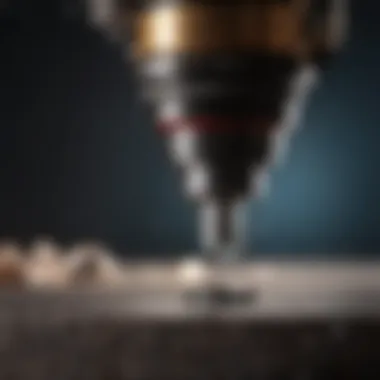
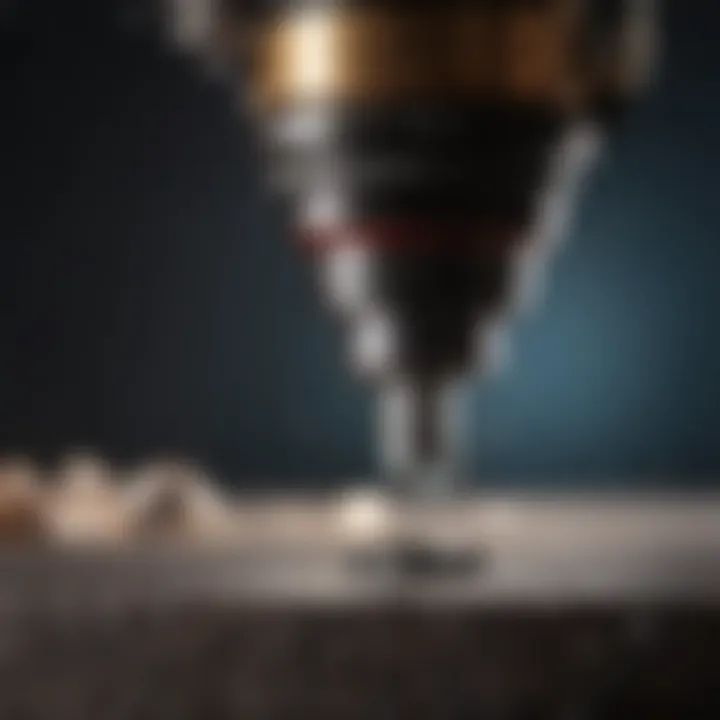
Furthermore, the accessibility of these advanced tools is likely to increase. Prices for high-quality digital microscopes and imaging software have gradually decreased, making it easier for smaller businesses and independent gemologists to access state-of-the-art equipment. As technology becomes more affordable, we can expect a broader adoption of advanced microscopes, leading to a more robust understanding of gemstones across the industry.
Educating Users on Proper Usage
When it comes to handling the GIA gem microscope, understanding proper usage can make all the difference between a novice and a seasoned professional. Proper training is vital to extract the maximum potential from this intricate tool, which, when used correctly, can reveal the hidden wonders within gemstones. Without a solid foundation in microscope operation, even the most experienced gemologists might miss critical details in gemstone evaluation.
This section centers on two crucial aspects: Training Programs Available and Best Practices for Beginners. These elements are tailored to empower users, ensuring they can confidently navigate the complexities of gem microscopy.
Training Programs Available
GIA offers various training programs that aim to elevate gemological skills through practical, hands-on experience. Not only do these programs provide theoretical knowledge, but they also emphasize real-world applications, ensuring that learners develop a deep understanding of the GIA gem microscope.
Some notable training options include:
- Webinars: These online sessions cover specific themes, such as the best lighting techniques or gem grading practices. They feature experienced gemologists who share insights based on both findings and anecdotal evidence.
- Workshops: In-person workshops provide a unique platform to practice with the GIA gem microscope under the guidance of seasoned instructors. Participants can delve into complex areas of study and address their questions directly.
- Self-Paced Courses: With the busy schedules of many gem enthusiasts, self-paced courses allow individuals to learn at their convenience. These courses often include video demonstrations and interactive quizzes.
By participating in these training programs, users can gain a clear understanding of the operational nuances of the microscope, essentially bridging the gap between theory and practice.
Best Practices for Beginners
As beginners step into the fascinating world of gem microscopy, implementing best practices can help them develop confidence and craftsmanship. These practices ensure that new users establish proper habits early in their learning journey. Here are some key points to keep in mind:
- Understand the Components: Before using the microscope, take time to familiarize yourself with its components. This includes the eyepieces, focus knobs, and lighting settings. Knowing your tools inside out promotes efficient use during applications.
- Proper Lighting Techniques: Beginners sometimes overlook the significance of lighting. Different gemstones may call for different types of illumination. Experiment with various lighting angles and intensities to find what works best for the specific gemstone being examined.
- Take Notes: Creating a habit of noting down observations during microscopy can vastly improve one’s proficiency. Not only does it create a reference point for learning, but reviewing notes also reinforces knowledge retention.
- Practice Patience: Understanding and mastering the instrument takes time. Allow for gradual learning curves and don’t hesitate to ask questions or seek assistance from seasoned gemologists during this process.
"The beauty of gemstones often lies in their details, and understanding those details requires patience – much like the gems themselves, there’s a lot beneath the surface."
Case Studies: Effective Use of the GIA Gem Microscope
In the realm of gemology, practical application often serves as the bridge between theory and reality. Case studies provide invaluable insights into the effective use of tools like the GIA gem microscope, revealing the intricacies of gemstone analysis and treatment detection. This section underscores how the GIA microscope is not merely a piece of equipment but an essential ally in the nuanced world of gem examination.
Through these case studies, we can glean crucial lessons, observe methodologies, and understand the tangible benefits that arise from thorough scrutiny of gemstones. In areas such as certification and enhancement detection, real-world examples offer a solid foundation for understanding the capabilities of this microscope.
Case Study One: Rare Gemstone Analysis
Consider a unique case where a gemologist utilized the GIA gem microscope to examine a rare blue diamond, identified as one of the first of its kind found in a specific mine. The gemologist faced several mysteries. Was it a natural occurrence? Were there enhancements? The microscope’s high magnification capabilities allowed for an intricate inspection. What stood out during this analysis was not just the color but also the internal characteristics that revealed the gem's history.
- Unique Inclusions: The microscope uncovered inclusions resembling feathers, a common trait in such diamonds. This aided in determining origin and authenticity.
- Grading Precision: With the detailed data gathered, the gemologist could grade the diamond accurately, thus ensuring proper certification.
Through meticulous examination, it turned clear this diamond held distinct properties that contributed to its rarity. The findings were provisional but significant enough to support a claim of its uniqueness in a market saturated with treated stones.
Case Study Two: Detection of Enhancements
In another instance, a jeweler was presented with a seemingly flawless emerald, coveted for its stunning vibrance. However, the gemstone's allure raised alarms about potential enhancements, practices frequently employed to boost color and appearance. The jeweler decided to wield the GIA gem microscope for scrutiny.
Employing different lighting techniques, including transmitted and reflected light, the gemologist was able to:
- Observe Color Zoning: This phenomenon indicated heat treatment, a fact that altered how the emerald was valued.
- Identify Bubbles: Bubbles in the inclusions hinted at oiling—a common enhancement method that can obscure flaws but diminishes the gem’s overall integrity.
This detailed analysis paved the way for an informed discussion with the customer regarding the actual value of the emerald. Ultimately, it clarified the ethical implications of selling gems that had been treated without disclosure.
In essence, these case studies demonstrate the indispensable role of the GIA gem microscope in practical gemology, emphasizing that detailed analysis is key to authenticity and ethical practices.
Culmination and Future Perspectives
The journey through understanding the GIA gem microscope reveals not just a tool but a crucial instrument in the art and science of gemology. This section ties together the pivotal elements discussed throughout the article, reflecting on both the immediate and long-term implications of this microscope in advancing gemological practices.
Summarizing Key Insights
Throughout our exploration, key insights emerge about the GIA gem microscope:
- Design and Functionality: The design is not merely aesthetic; it serves practical purposes vital for gem analysis. Its intricate components work harmoniously to provide clarity and precision.
- Applications in Grading: In the delicate realm of grading and certification, this microscope offers gemologists a close-up view of inclusions, color zoning, and other critical features.
- Technological Integration: The integration of digital technologies represents a significant leap forward, equipping gemologists with tools that allow for better analysis and record-keeping.
- Training and Education: As new generations of gemologists emerge, the focus on appropriate training methods ensures that the knowledge of best practices and equipment usage is passed down effectively.
These insights prompt reflection on how these factors intertwine to elevate our understanding of gemstones, moving them from mere luxuries to artifacts of intricate beauty and history.
The Role in Advancing Gemology
Looking ahead, the implications of the GIA gem microscope in gemology cannot be overstated. It serves not just as a tool for examination, but as a beacon for future innovations in the field. The role of advanced microscopy aligns closely with ongoing trends in research and development which push boundaries in how we perceive and study gemstones.
The evolution of grading methodologies, influenced by such advancements in microscopy, signifies a more rigorous approach to gemstone evaluation. Enhanced precision in identification helps combat issues like misrepresentation in the market, protecting both retailers and consumers.
Moreover, the commitment to education through training programs goes beyond merely teaching usage; it empowers new gemologists to become advocates for ethical practices in sourcing and selling gemstones. The continuous feedback loop created between technology and user education ensures that the field remains dynamic and responsive to new challenges.
To sum it all up, it’s clear that the GIA gem microscope is more than a simple piece of equipment. It is pivotal in driving the future of gemology toward greater standards of accuracy, ethical practices, and broadening the scope of what we can understand about these treasured stones.







